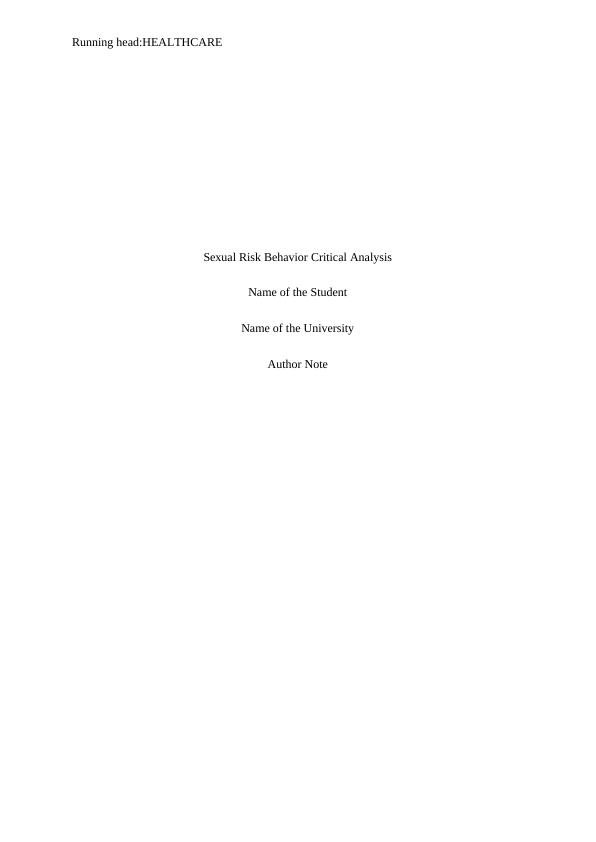Prevention Strategy For High Risk African American Adolescents
Write a two to three-page critique of the assigned readings on biomedical, behavioral, and structural HIV prevention interventions for adolescents and young adults, evaluating their strengths and weaknesses, discussing the introduction and literature review, evaluating the methods and results, commenting on the limitations, and providing overall thoughts on the theoretical and practical contributions of the manuscripts.
Added on 2022-09-13
Prevention Strategy For High Risk African American Adolescents
Write a two to three-page critique of the assigned readings on biomedical, behavioral, and structural HIV prevention interventions for adolescents and young adults, evaluating their strengths and weaknesses, discussing the introduction and literature review, evaluating the methods and results, commenting on the limitations, and providing overall thoughts on the theoretical and practical contributions of the manuscripts.
Added on 2022-09-13
End of preview
Want to access all the pages? Upload your documents or become a member.


